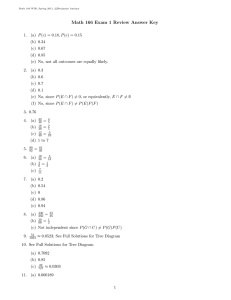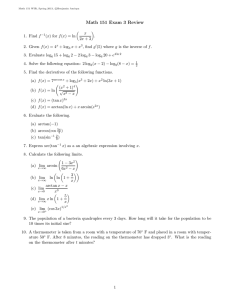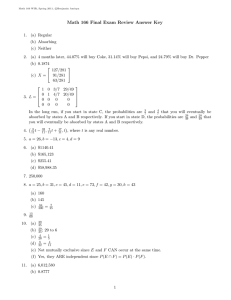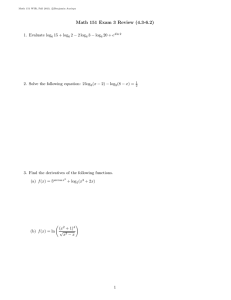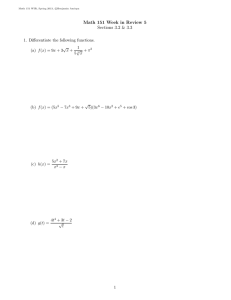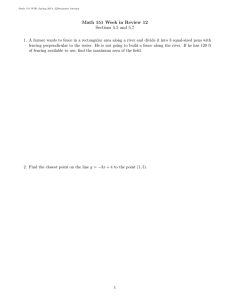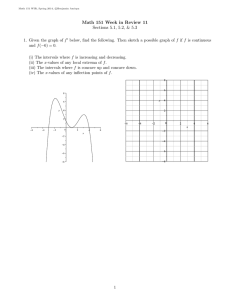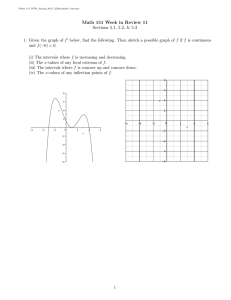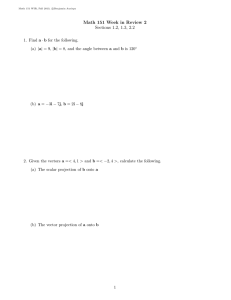Document 10412556
advertisement
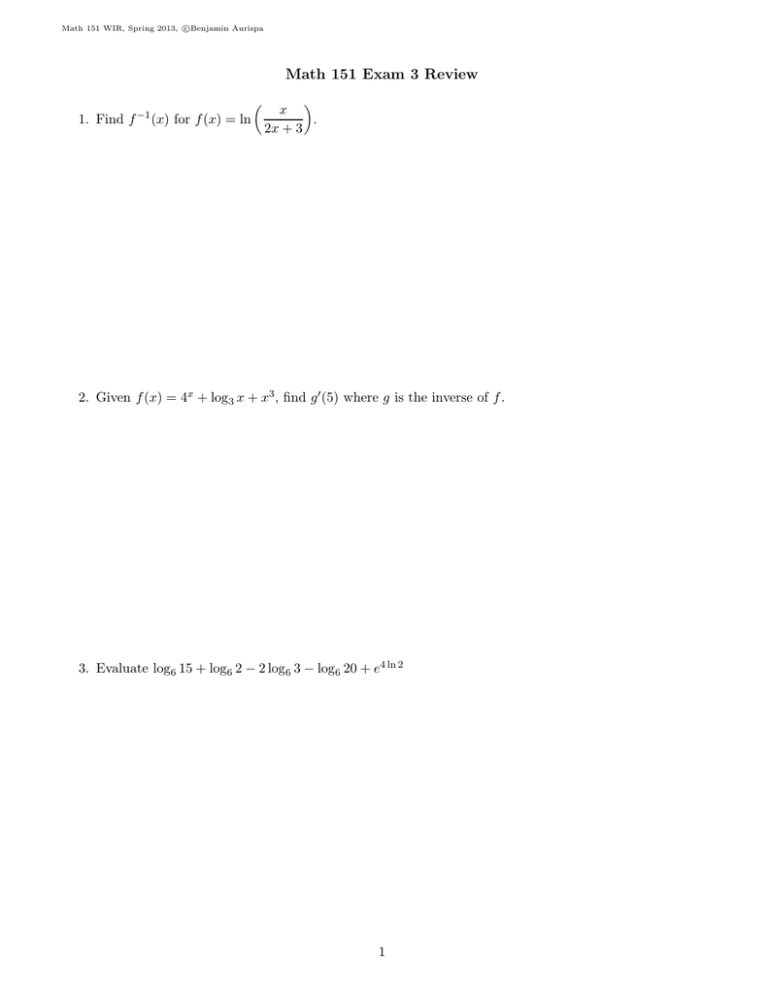
c Math 151 WIR, Spring 2013, Benjamin Aurispa Math 151 Exam 3 Review 1. Find f −1 (x) for f (x) = ln x . 2x + 3 2. Given f (x) = 4x + log3 x + x3 , find g ′ (5) where g is the inverse of f . 3. Evaluate log6 15 + log6 2 − 2 log6 3 − log6 20 + e4 ln 2 1 c Math 151 WIR, Spring 2013, Benjamin Aurispa 4. Solve the following equation: 2 log9 (x − 2) − log9 (8 − x) = 5. Find the derivatives of the following functions. (a) f (x) = 7arccos x + log5 (x3 + 2x) + x2 ln(3x + 1) (b) f (x) = ln (x2 + 1)4 √ x3 − x ! 2 1 2 c Math 151 WIR, Spring 2013, Benjamin Aurispa (c) f (x) = (tan x)3x (d) f (x) = arctan(ln x) + x arcsin(e2x ) 6. Evaluate the following. (a) arctan(−1) (b) arccos(cos 5π 4 ) (c) tan(sin−1 29 ) 3 c Math 151 WIR, Spring 2013, Benjamin Aurispa 7. Express sec(tan−1 x) as a an algebraic expression involving x. 8. Calculate the following limits. (a) lim arcsin x→∞ (b) lim x→∞ 1 − 3x2 6x2 − x ln ln 1 + 3 x ! arctan x − x x→0 x3 (c) lim (d) lim x ln 1 + x→∞ 5 x 4 c Math 151 WIR, Spring 2013, Benjamin Aurispa (e) lim (cos 3x)1/x 2 x→0+ 9. The population of a bacteria quadruples every 3 days. How long will it take for the population to be 10 times its initial size? 5 c Math 151 WIR, Spring 2013, Benjamin Aurispa 10. A thermometer is taken from a room with a temperature of 70◦ F and placed in a room with temperature 50◦ F. After 8 minutes, the reading on the thermometer has dropped 3◦ . What is the reading on the thermometer after t minutes? 11. Given the graph of the DERIVATIVE of a function f below, identify the locations of all local extrema and inflection points. 6 c Math 151 WIR, Spring 2013, Benjamin Aurispa 12. Find the critical numbers of the function f (x) = (x − 2)1/7 x2 . 13. Find the abosolute maximum and minimum values of the function f (x) = sin2 x + cos x on the interval [0, 3π 4 ]. 7 c Math 151 WIR, Spring 2013, Benjamin Aurispa 14. For the function f (x) = 15x4 − x5 , find the intervals where f is increasing/decreasing, the x-values of any local extrema, intervals of concavity, and the x-values of any inflection points. 15. For the function f (x) = xex of any local extrema. 2 +3x , find the intervals where f is increasing/decreasing and the x-values 8 c Math 151 WIR, Spring 2013, Benjamin Aurispa 16. A box with an open top is to be constucted from 30 m2 of cardboard. The length of the box is to be twice its width. Find the dimensions of the box that will maximize the volume. 17. Find the point on the parabola y = 21 x2 which is closest to the point (5, 1). 9 c Math 151 WIR, Spring 2013, Benjamin Aurispa 18. Find the most general antiderivative of f (x) = 19. Find f (x) if f ′ (x) = 6 x √ 3 1 3 x+ 5 + √ + sin x + x7 . 2 x 1−x + ex − 4 and f (1) = 6. 20. If the acceleration of a particle is given by a(t) =< cos t, t >, find the position function r(t) if it is known that v(0) =< 2, 3 > and r(0) =< 1, 1 >. 10
